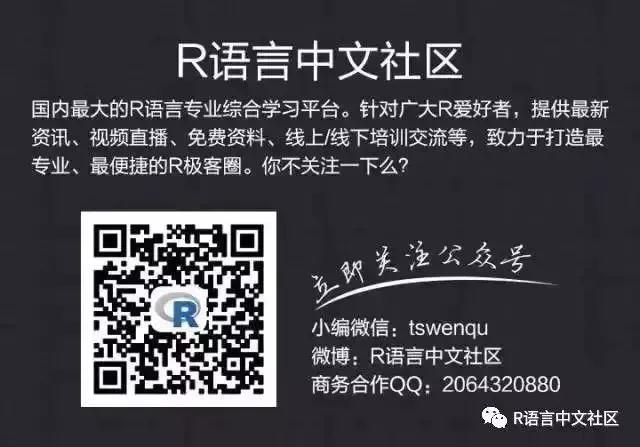taoyan:R语言中文社区特约作家,伪码农,R语言爱好者,爱开源。
个人博客: https://ytlogos.github.io/
公众号:生信大讲堂
往期回顾
R语言可视化学习笔记之相关矩阵可视化包ggcorrplot
R语言学习笔记之相关性矩阵分析及其可视化
ggplot2学习笔记系列之利用ggplot2绘制误差棒及显著性标记
ggplot2学习笔记系列之主题(theme)设置
用circlize包绘制circos-plot
利用gganimate可视化R-Ladies发展情况
一篇关于国旗与奥运会奖牌的可视化笔记
利用ggseqlogo绘制seqlogo图
数据分析中数据处理也就是data manipulation是十分繁琐的,为此我将在博客里特意建一个分类:Data Manipulation。本文将讲讲如何在R语言中创建变量、重命名以及merge。
create a dataset
fy <- c(2010,2011,2012,2010,2011,2012,2010,2011,2012)
company <- c("Apple","Apple","Apple","Google","Google","Google","Microsoft","Microsoft","Microsoft")
revenue <- c(65225,108249,156508,29321,37905,50175,62484,69943,73723)
profit <- c(14013,25922,41733,8505,9737,10737,18760,23150,16978)
companiesData <- data.frame(fy, company, revenue, profit)
head(companiesData)
## fy company revenue profit
## 1 2010 Apple 65225 14013
## 2 2011 Apple 108249 25922
## 3 2012 Apple 156508 41733
## 4 2010 Google 29321 8505
## 5 2011 Google 37905 9737
## 6 2012 Google 50175 10737
接下来我们需要查看数据集的结构,用str()函数查看
str(companiesData)
## 'data.frame': 9 obs. of 4 variables:
## $ fy : num 2010 2011 2012 2010 2011 ...
## $ company: Factor w/ 3 levels "Apple","Google",..: 1 1 1 2 2 2 3 3 3
## $ revenue: num 65225 108249 156508 29321 37905 ...
## $ profit : num 14013 25922 41733 8505 9737 ...
可以看到年份fy这里是是数值型,我们需要更改为因子型,方便后期处理
companiesData$fy <- factor(companiesData$fy, ordered = TRUE)
现在数据已经整理过好了,下面我们来添加变量,比如我们可以看看各个公司的利润率
companiesData$margin <- (companiesData$profit/companiesData$revenue)*100
#查看数据
head(companiesData)
## fy company revenue profit margin
## 1 2010 Apple 65225 14013 21.48409
## 2 2011 Apple 108249 25922 23.94664
## 3 2012 Apple 156508 41733 26.66509
## 4 2010 Google 29321 8505 29.00651
## 5 2011 Google 37905 9737 25.68790
## 6 2012 Google 50175 10737 21.39910
小数点位数太多了,这里我们保留一位
companiesData$margin <- round(companiesData$margin, 1)
head(companiesData)
## fy company revenue profit margin
## 1 2010 Apple 65225 14013 21.5
## 2 2011 Apple 108249 25922 23.9
## 3 2012 Apple 156508 41733 26.7
## 4 2010 Google 29321 8505 29.0
## 5 2011 Google 37905 9737 25.7
## 6 2012 Google 50175 10737 21.4
这样我们就创建了一个新的变量margin,当然也可以删除变量,只要复制需要删除的变量NULL就行了。
#delete variable margin
companiesData$margin <- NULL
head(companiesData)
## fy company revenue profit
## 1 2010 Apple 65225 14013
## 2 2011 Apple 108249 25922
## 3 2012 Apple 156508 41733
## 4 2010 Google 29321 8505
## 5 2011 Google 37905 9737
## 6 2012 Google 50175 10737
再顺便介绍一下transform函数,用于创建变量,transform的格式如下
dataFrame <- transform(dataFrame, newColumn = oldColumn1 + oldColumn2)
companiesData <- transform(companiesData, margin=round((profit/revenue)*100), 1)
head(companiesData)
## fy company revenue profit margin X1
## 1 2010 Apple 65225 14013 21 1
## 2 2011 Apple 108249 25922 24 1
## 3 2012 Apple 156508 41733 27 1
## 4 2010 Google 29321 8505 29 1
## 5 2011 Google 37905 9737 26 1
## 6 2012 Google 50175 10737 21 1
接下来讲一下merge,主要是merge函数,它要求进行融合的两个数据集需要有共同的变量即id,使用格式如下:
finaldt <- merge(dataset1, dataset2, by="id")
这里我们再创建一个数据集用于merge
#creat another dataset
company <- c("Apple","Google","Microsoft")
ava1 <- c(1,2,3)
data2 <- data.frame(company, ava1)
head(data2)
## company ava1
## 1 Apple 1
## 2 Google 2
## 3 Microsoft 3
数据集data2与数据集companiesData具有共同的变量company(id)
#merge the two dataset
newdata <- merge(companiesData, data2, by="company")
这样就得到一个完整的数据集了,当然添加行、列还有两个很有用的函数:rbind()以及cbind(),这里就不介绍了 最后讲一下重命名,其实很简单
companiesData$company <- c("A", "A", "A", "G", "G", "G", "M", "M", "M")
head(companiesData)
## fy company revenue profit margin X1
## 1 2010 A 65225 14013 21 1
## 2 2011 A 108249 25922 24 1
## 3 2012 A 156508 41733 27 1
## 4 2010 G 29321 8505 29 1
## 5 2011 G 37905 9737 26 1
## 6 2012 G 50175 10737 21 1
#rename the colname
colnames(companiesData) <- c("Year", "Com", "Rev", "Pro", "Mar")
seessioninfo
sessionInfo()
## R version 3.4.0 (2017-04-21)
## Platform: x86_64-w64-mingw32/x64 (64-bit)
## Running under: Windows 8.1 x64 (build 9600)
##
## Matrix products: default
##
## locale:
## [1] LC_COLLATE=Chinese (Simplified)_China.936
## [2] LC_CTYPE=Chinese (Simplified)_China.936
## [3] LC_MONETARY=Chinese (Simplified)_China.936
## [4] LC_NUMERIC=C
## [5] LC_TIME=Chinese (Simplified)_China.936
##
## attached base packages:
## [1] stats graphics grDevices utils datasets methods base
##
## loaded via a namespace (and not attached):
## [1] compiler_3.4.0 backports_1.1.0 magrittr_1.5 rprojroot_1.2
## [5] tools_3.4.0 htmltools_0.3.6 yaml_2.1.14 Rcpp_0.12.11
## [9] stringi_1.1.5 rmarkdown_1.5 knitr_1.16 stringr_1.2.0
## [13] digest_0.6.12 evaluate_0.10
公众号后台回复关键字即可学习
回复 R R语言快速入门及数据挖掘
回复 Kaggle案例 Kaggle十大案例精讲(连载中)
回复 文本挖掘 手把手教你做文本挖掘
回复 可视化 R语言可视化在商务场景中的应用
回复 大数据 大数据系列免费视频教程
回复 量化投资 张丹教你如何用R语言量化投资
回复 用户画像 京东大数据,揭秘用户画像
回复 数据挖掘 常用数据挖掘算法原理解释与应用
回复 机器学习 人工智能系列之机器学习与实践
回复 爬虫 R语言爬虫实战案例分享
